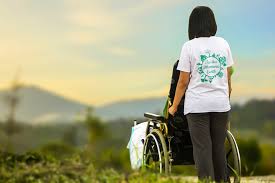A Silent Epidemic

The elderly represent 14.5% of the United States population; 1 out of 10 will spend some part of their lives in a nursing care facility; 1.3 million of those elderly are currently living in nursing homes and are vulnerable to neglect and abuse at the hands of trusted workers.
Nursing homes have existed for centuries as a way to insure that the old can continue to live their lives in comfort and with adequate medical care. As people age and begin to develop conditions that require daily medical care by trained professionals, nursing and home care seem to provide a happy medium whereby people can get the round the clock care they need while remaining in a comforting environment instead of a hospital or hospice, but the mistreatment and neglect of the nation’s most vulnerable demographic is widespread and under-reported by the trusted workers in positions of power. 1 out of every 3 nursing homes in the United States has been cited with some sort of abuse. Elder abuse is defined as any form of mistreatment that results in harm to or loss of an elder person while neglect refers to when a caregiver fails to meet the needs of an elderly person.
When an abuse is reported by a person who suffers from a degenerative disease such as Alzheimer’s or dementia, their report of sexual or physical abuse is often discounted, and instead of being investigated, it is disregarded. There are more than 16,000 reports of sexual assault, which only includes cases intervened upon by federal middle men. This epidemic is widespread and mostly silent as elderly people often rely on their abusers’ employers and or the abusers themselves to take a stand for their welfare. Signs that point to abuse or neglect such as sores, scratches, or bruises are often unreported, treated as self inflicted, or even covered up in fear of an expensive court case.
So what can we do to prevent abuse and protect our senior citizens? The El Paso County website, (http://dhs.elpasoco.com/Pages/AdultElderAbuse.aspx) urges people to file a report, saying:
“When making a report to law enforcement and Adult Protective Services, provide as much information as possible about the at-risk adult and the alleged perpetrator including:
The adult’s demographic information, such as name, gender, date of birth, or approximate age, address, current location if different from permanent address, and phone number;
Medical and/or disabling condition(s);
Contact information for friends, family, neighbors, or caregivers;
Specific concerns regarding the alleged mistreatment;
Safety concerns for the adult;
The alleged perpetrators information, such as name, gender, address, phone number and relationship to the at-risk adult, when mistreatment is alleged.”
Not all nursing homes are bad or abusive, and the Medicare nursing home compare list gives ratings based on how well its members are treated, health inspection ratings, and overall ranking. (https://www.medicare.gov/nursinghomecompare/search.html) On June 15, it is National Elder Abuse Awareness Day, and don’t be afraid to speak up and educate about this issue and ask for more trained staff at nursing homes with comprehensive educations on how to spot and prevent elder abuse.

Keeping it off the chizzain its Ryn, I love acapella singing and chilling at my house. Extremely vain and better than everyone.








Calvin Yocum • Apr 17, 2017 at 12:54 pm
Great article! With the growing amount of these cases seen in the news today, hopefully awareness will be raised in order to ensure the safety of our elder population.
Ashlie Steel • Apr 17, 2017 at 12:31 pm
I have seen so many documented accounts of elderly abuse and it hurts to know people have lost their humanity toward one another. So sad that this is an issue in our world.
Bethany Diaz • Apr 17, 2017 at 12:14 pm
I hear about this all the time, sometimes the cases get to the news, but all to often they get ignores. My great-grandma is at a nursing home and so I especially take notice when I heard of elderly abuse.
Luke Negley • Apr 17, 2017 at 12:07 pm
I really liked this article Ryn!
It’s sad that the cases of abuse are over looked due to the mental condition of the resident.